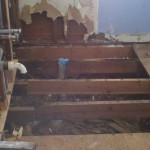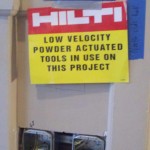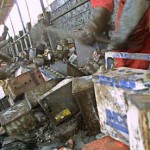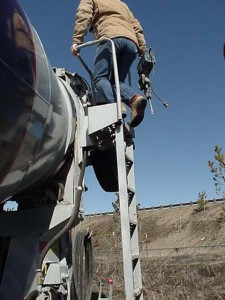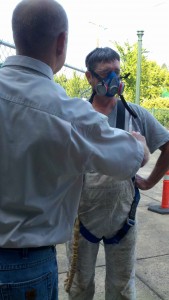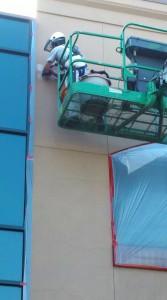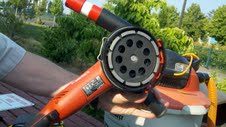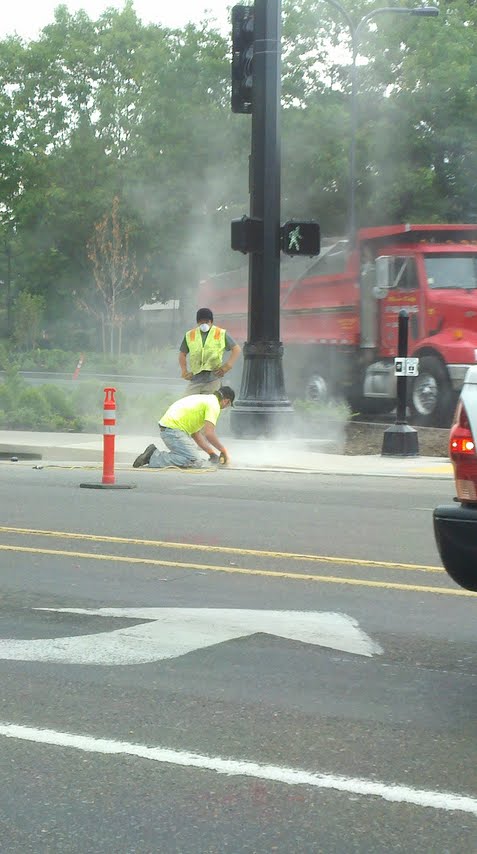Mon 19 Nov 2012
Before you wear a respirator
Posted by admin under Biological Monitoring, Exposure, Federal OSHA, Hazard Communication, Management, odor thresholds, OSHA, Personal Protective Equip (PPE), Respirators, Safety Policies, Safety Programs, Training
Comments Off on Before you wear a respirator
There are some items you need to do BEFORE you wear a respirator. If you are using it on a voluntary basis, go here.
- obtain medical approvalfor employees to wear a respirator
- fill out a questionaiire (just like Appendix C of OSHA)
- they might have you perform a lung function test (spirometry)
- you will get a yes/no answer (probably 99% are approved)
- you might try an online medical evaluation
- have a fit test performed
- qualitative fit test unless you wear a full face mask, or a type better than this
- my favorite choice is irritant smoke, but it could also be saccharine, isoamyl acetate (banana), or Bitrex (R).
- get trained. Learn how to:
- clean it
- store it
- know what your respirator can’t protect you from
- choose the right cartridges
- know when you have break through
- fit check (different than a fit test -BTW)
Wondering how often you must update the above steps? Go here. There are more steps to having a respiratory program, but you must do these things before you start.
